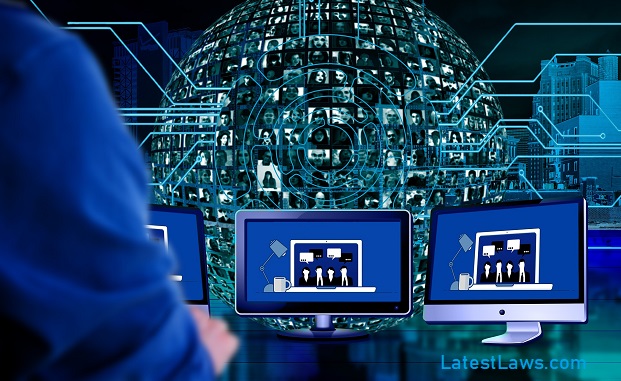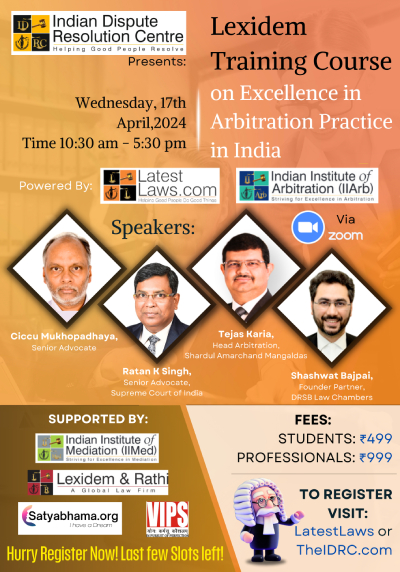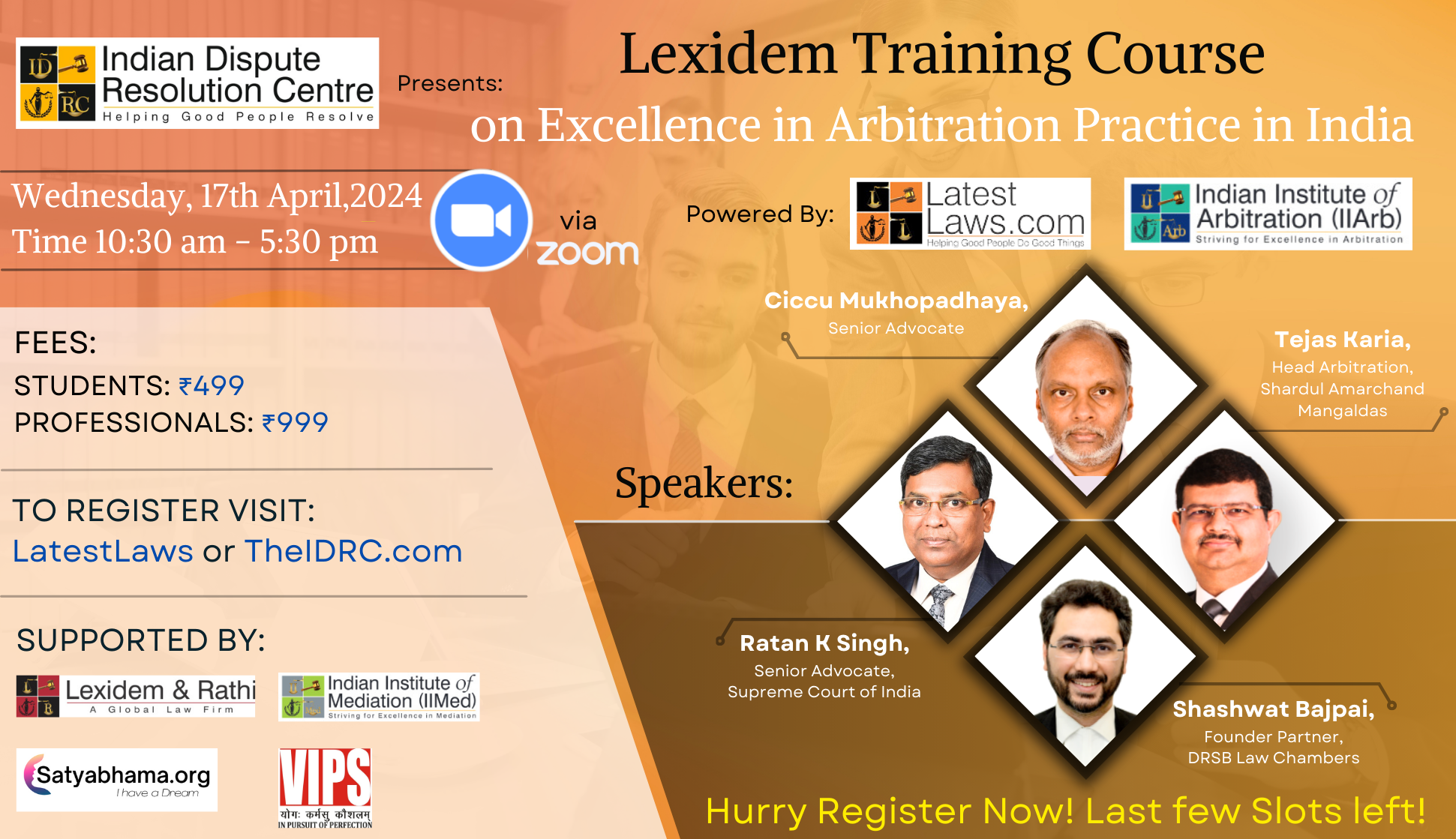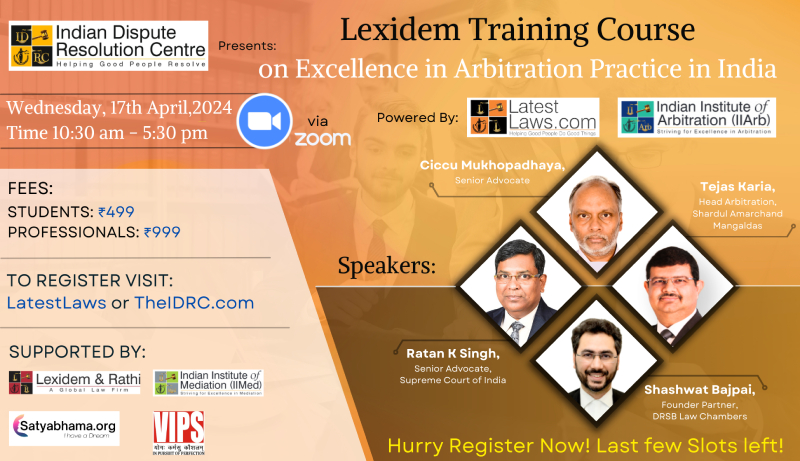The Author, Anjana Reghunath is an Associate at Niti Nyaya Law Offices, New Delhi.
THE CONCEPT OF VIRTUAL COURT
The virtual court is the most defining concept that the pandemic has introduced to the legal environment around the globe, and this wave has also had an effect on the reform in the structure of the Indian Court.[1] The technological skill of the judicial system, the principles of which remained unchanged throughout the last century, with little to no development dramatically altered because of the perplexing situation required by the pandemic. Progress that would otherwise have taken a few years to be made has been made within two weeks.
The pace in which these reforms were made was unprecedented and inevitable to the degree that there was no way for the courts to be completely functional and whether or not in the Pandemic-justice could not be delayed. This article discusses the prospects of digital courts and virtual hearings and their transformation from a growth viewpoint to a need and a critical review of the complexities of their implementation and effectiveness. It also touches on the potential of virtual courts after the pandemic.
TRANSITION FROM A DEVELOPMENT PROSPECT TO A NECESSITY
The eCourts Integrated Mission Mode Project was introduced as part of the national eGovernance project in the High Courts and the District/Subordinated Courts of the country. The project was conceived on the basis of the "National Policy and Action Plan for the Implementation of Information and Communication Technology in the Indian Judiciary-2005" by the e-Committee of the Supreme Court of India. The eCommittee was set up in 2004 to draw up an action plan for the ICT Empowering of the Judiciary with the Patron in Chief Adhoc as Chief Justice of India. The Hon’ble Chief Justice of India launched the e-Courts National Portal (ecourts.gov.in) on 7th August 2013. This includes Case Status, Regular Cause-List, Cases Filed and Cases Reported through the Case Information System (CIS) program.[2]
The e-Courts National portal also offers educational content for judicial officers and personnel, access to websites of the District Court and statistical records that can be used as a judicial information management device. This portal is intended to play a crucial role in the implementation of judicial reforms. The e-Courts National portal also offers educational content for judicial officers and personnel, access to websites of the District Court and statistical records that can be used as a judicial information management device. This portal is intended to play a crucial role in the implementation of judicial reforms. The key objectives of the eCourts project were to simplify processes to ensure clarity of information access to its stakeholders, to increase judicial efficiency both qualitatively and quantitatively, and to make the justice delivery system affordable, open, cost-effective and transparent.
The sudden outbreak of COVID-19 and the nationwide lockdown prompted the Supreme Court and the High Courts to hold virtual court hearings. While a full shutdown of the judiciary is undesirable, and access to justice and judicial review is so fundamental that alternatives need to be sought, such a measure must be taken, while ensuring that free and fair trials are not interrupted. As a result, state-of-the-art technology was built in courts to facilitate virtual hearings, and the judiciary moved to virtual hearings a day before the national shutdown in order to comply with social-distance requirements and to limit access to court premises.[3]
CHALLENGES
Virtual hearings conducted by the Supreme Court was far from satisfactory" and "profoundly disappointing," was the opinion of the President of the Supreme Court Bar Association and Senior Advocate Dushyant Dave[4]. The digital court platform can seem to offer wider access to justice, but this would only be possible if every element involved in the framework, such as judges, advocates, court staffs, litigants etc were involved. There are far-reaching practical problems in the use of the digital platform, including accessibility issues, obsolete audio-video equipment, lack of power backup, and most significantly, digital literacy among people. Addressing these problems and alleviating the weaknesses would entail a substantial investment in ICT to address the needs that would pose a major financial burden.
Besides technological issues and economic costs, there will also be a large number of legal disputes in the implementation process. Major will involve the risk of a malicious testimony of witnesses and false evidence. The conventional legal method requires the court to investigate and analyse the testimony of witnesses along with their acts, which also enable lawyers to uncover the facts. It would not be possible to do so in the case of virtual trials and there would be sufficient space for the parties to testify falsely. The online platform also presents a possibility to identify fraud on the part of the parties or any third party, since there would be comparatively less human oversight compared to physical hearings.[5] The situation of open access to hearings would also not have been possible at these virtual hearings, which were otherwise present. In several cases, the Supreme Court has considered the value of open access to the public for proceedings that preserve the integrity and efficiency of the courts. In the case of Swapnil Tripathi [6], the Supreme Court in 2018 had recommended and also set out guidelines for the live streaming of court proceedings for people wishing to attend hearings. Later in November 2020 the Supreme Court's e-Committee set up a panel of four judges to lay down rules for live streaming proceedings in high courts and trial courts, with a vision to promote fairness in court proceedings.
EFFECTIVENESS
The key advantage of virtual hearings is that of course, they minimize or remove the need for travel, a consideration that is significant not only in the sense of the possible short-term travel restrictions of COVID-19, but also more broadly in order to reduce the environmental effect of litigation. In addition to some cost savings, courts and parties can potentially be more flexible as to when hearings take place for example, hearings may be split into different sections much more conveniently when there is no need for arbitrators and lawyers to gather in a single venue.[7]
As virtual hearing does not result in the removal of any procedural steps, the costs savings they offer are relatively modest. Although the development of video-conferencing technology means that significant signal lags and other technical issues should be things of the past, few would argue that virtual hearings can yet truly replicate the interaction between tribunals and counsel that ‘in-person’ hearings offer. Many of these technologies have shown that they provide greater access to justice. The courts have found that people with hourly or non-flexible schedules could join the hearing remotely even from their place of work. The Plaintiffs and defendants are much more likely to be involved because of the familiarity of using video on their phones. And witnesses would be more comfortable as virtual courts are less intimating than being physically present in court.
POST PANDEMIC FUTURE OF VIRTUAL COURTS
Justice D.Y Chandrachud, who chairs the e-Committee at the Supreme Court, said that in future, virtual court hearings would not substitute or replace physical courts and that the digitization of courts, including e-filing, must be standardized throughout nation. The submission of cases to the Supreme Court is expected to undergo a drastic shift with the launch of a new e-filing module in the near future.[8]
The module would provide personalized information to any advocate-on-record of cases filed by them, their own case list, specifics of pleadings filed by them and pleadings filed by others in cases in which they appear. The service would be available 24 hours a day which would mean that a lawyer can file a case at any time of the day and on any day, regardless of whether the registry is running or not. It certainly requires a revolution of society, moving the status quo to a whole different framework. The Supreme Court could opt for a mix of physical and virtual court systems. It will make it easier for the courts to reap the benefits of the best of both worlds – increasing productivity, cutting cost and time but still maintaining fairness.
CONCLUSION
Undoubtedly, this is an occasion for the Indian Judiciary to promote and accept the virtual framework for hearing cases and to proceed even after the COVID-19 pandemic. Technological advances and developments have penetrated people's lives, and equally accessible technologies can be used by the Court to minimize the pendency of litigation, speed up the disposition of cases, and to handle the case lists effectively.
However the adoption of video conferencing technologies at court hearings must be limited to the length of the ongoing crisis. The automated courtrooms cannot replace the open court hearing procedure of the administration of justice.[9] Inadequate technology and inadequacies of the virtual justice system have been encountered by all those who have come before virtual courtrooms, and the difficulties posed by Proponents have been widely reported. The technical advances in the administration of justice must also be incorporated in a progressive, systematic and staggered fashion, with protections to ensure that the concept of open court hearings is achieved in a holistic way and that it does not conflict with the administration of justice or the integrity and majesty of open court hearings or interfere with any interests of the litigants or witnesses.
References:
[1] PTI, “SC defends 'virtual courts system' during COVID-19 pandemic, says it ensured justice’’, The New Indian Express,2nd May 2020
[2] www.districts.ecourts.gov.in, E courts Mission mode project
[3] Arijit Prasad,Virtual Courts - Can They Replace Open Court hearings?, June 19,2020
[4] Bhadra Sinha, Apoorva Mandhani, Virtual courts system is pathetic, justice not being done: SC Bar body chief Dushyant Dave, THE PRINT ,Aug 23, 2020, 8:25 PM
[5] Pramod Kumar Dubey, Virtual Courts: A Sustainable Option?, BAR AND BENCH ,Aug 23, 2020, 11:09 PM
[6] Swapnil Tripathi v. Supreme Court of India, (2018) 10 SCC 628.
[7] Pramod Kumar Dubey, Virtual Courts: A Sustainable Option?, BAR AND BENCH ,Aug 23, 2020, 11:09 PM
[8] Murali krishnan ,Virtual courts not a substitute to physical courts: Justice DY Chandrachud,Hindustan Times, New Delhi, May 24 ,2020
[9] Murali krishnan ,Virtual courts not a substitute to physical courts: Justice DY Chandrachud,Hindustan Times, New Delhi, May 24 ,2020
Picture Source :




























